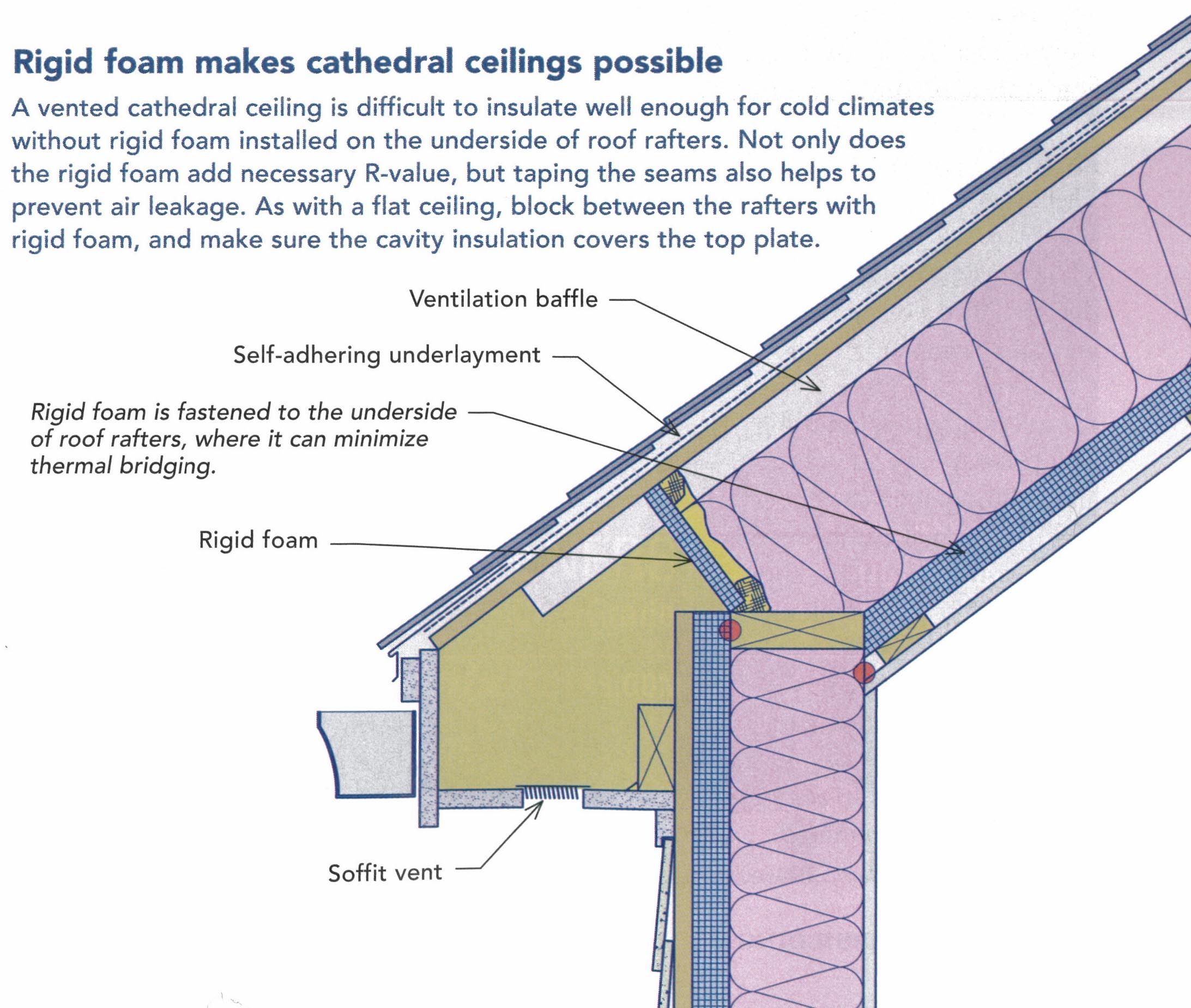Insulation Requirements For Cold Deck Flat Roof

Cold roofs have the waterproof layer placed directly onto the roof deck and the insulation inside the roof just above the ceiling.
Insulation requirements for cold deck flat roof. Ventilation is required for these roofs. See our flat roof insulation solutions. A ventilation gap usually 50mm should be provided between the top of the insulation and underside of the roof covering to allow the air to flow across. The higher the r value the better the thermal performance of the insulation.
Cold deck this is where the insulation is placed between the joists rafters or in between the ceiling joists in the case of a pitch roof. Lots of traditional flat roofs are of the cold roof construction type. As for insulating below the joists an insulating laminate insulation bonded to plasterboard such as celotex pl4000 or a separate rigid pir insulation board finished with a separate sheet of plasterboard can be securely fixed to the joists to provide an internal finish to the roof. In each case the name refers to the position of the insulation in relation to the roof deck.
Recommended home insulation r values. R value is a measure of insulation s ability to resist heat traveling through it. When thermal insulation is placed below the deck the ventilation must also be on the underside. Warm flat roof insulation.
This video shows the key features of a flat roof cold deck construction and how to draw the details to a scale of 1 10. There are two types of flat roof systems warm and cold roofs which affect the positioning of the ventilation. Alternatively battens can be secured to the underside of the. Traditionally flat roof constructions fall in to two camps.
Insulation level are specified by r value. Flat roof ventilation allows for the circulation of air in the property particularly for warmer rooms in residential buildings. A cold roof has the insulation placed below the structural deck which thus remains cold. Ventilation openings either at.
Cold deck flat roof the thickness of insulation required will vary depending on the material you decide to use and the manufacturer s specification. Cold roofs and warm roofs. This means there is a vapour control layer in the ceiling and cross ventilation at the eaves or the top of the walls. Warm flat roofs and cold flat roofs.
This construction relies on a vapour control layer working effectively and in tandem with a continuous ventilated airspace to disperse the water vapour to atmosphere before it reaches the cold deck and condenses. Cold flat roof insulation. In this case ventilation is required and the roof can still become wet with condensation which may cause materials to decay. Warm deck the type of insulation for this is usually of a rigid type and the thickness will vary depending on the manufacturer s specifications.
There are two types of flat roof.














































